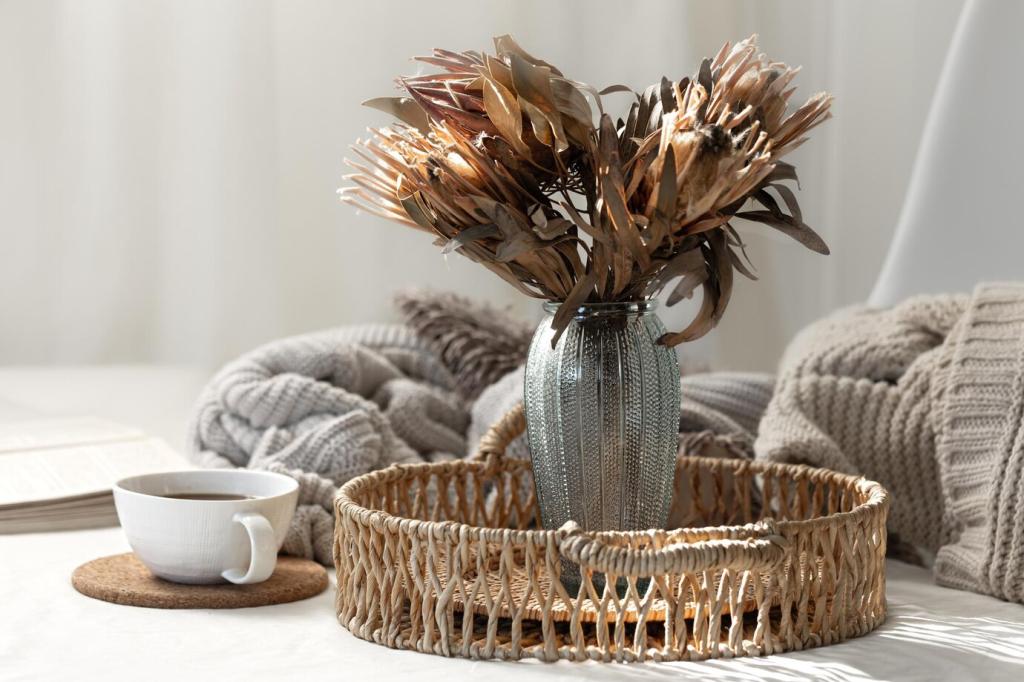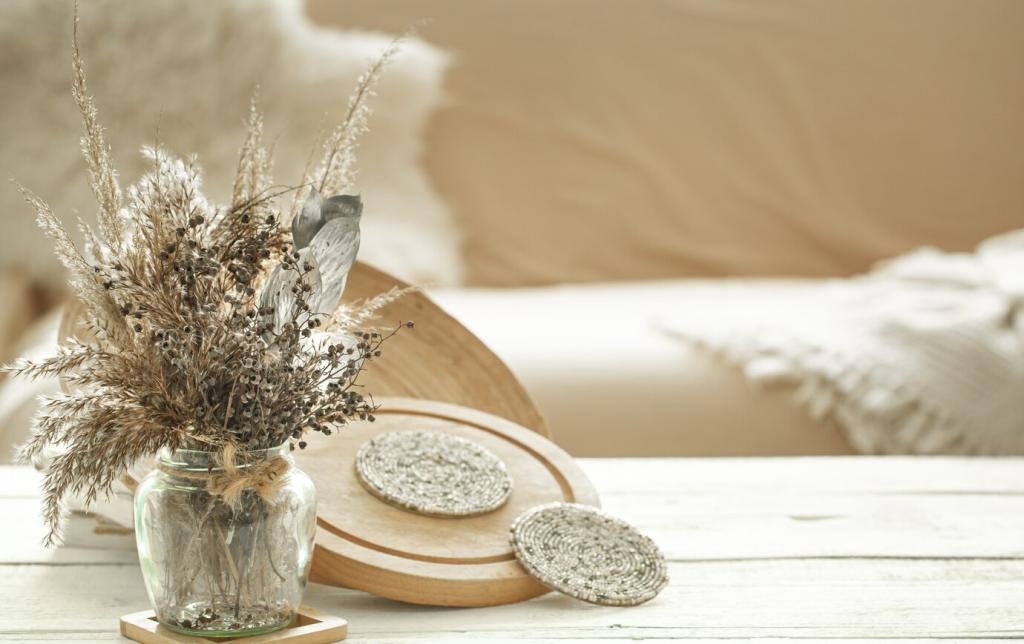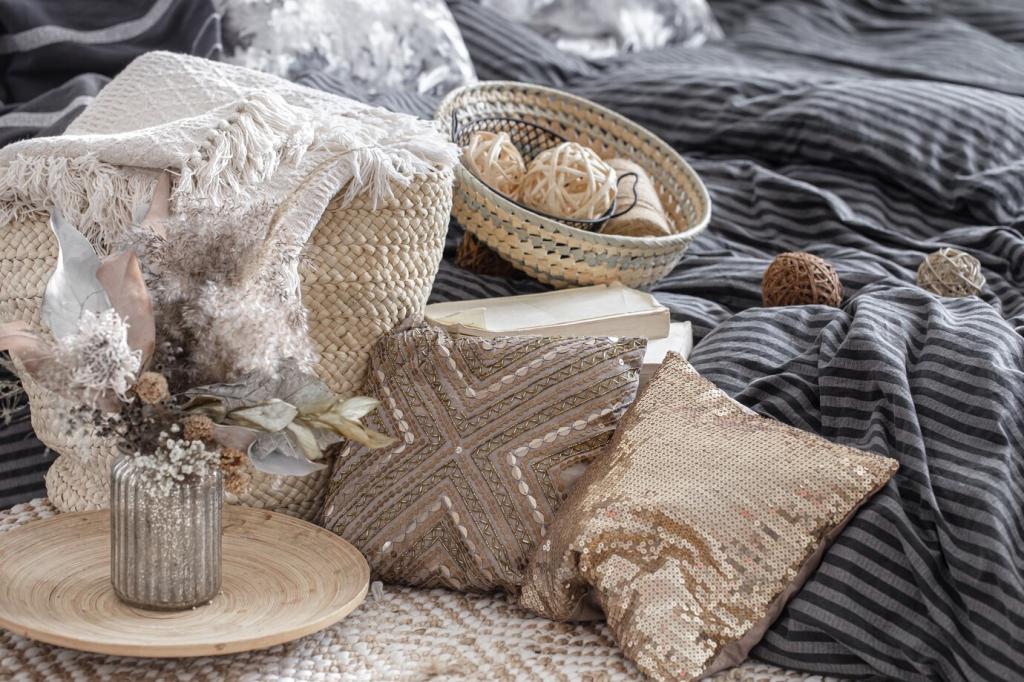
Sustainable Materials and Their Impact on 2024 Interior Design
Sustainable materials have emerged as one of the most transformative forces in interior design for 2024. As both consumers and designers grow more conscious of environmental footprints, the use of eco-friendly resources is shaping aesthetics, functionality, and values within modern spaces. This movement goes beyond mere trend, shifting the industry standard toward mindful choices that respect both people and the planet. The ripple effects of these decisions reach every aspect of interior design, from the type of wood selected for flooring to innovative new textiles, forming a new language of luxury, durability, and responsibility.
Evolving Definitions of Sustainability in Interior Design

Designers are adopting lifecycle thinking, which considers the journey a material takes from extraction and production to its end-of-life disposal or potential for reuse. This approach reframes design decisions, encouraging the use of materials that have a minimal carbon footprint, are non-toxic, and can be either recycled or biodegraded. With lifecycle thinking, materials such as reclaimed wood, recycled metals, and low-emission finishes are selected for their long-term environmental benefits, rather than simply their immediate visual appeal, leading to spaces that are both beautiful and ecologically responsible.
The Rise of Renewable Plant-Based Materials
Bamboo has become a centerpiece in eco-conscious design due to its rapid renewal rate and remarkable strength. Used in everything from flooring and wall cladding to fine furniture and decorative accessories, bamboo imparts a light, breathable quality to interiors. Its minimal need for pesticides or fertilizers and efficient processing further enhance its sustainability credentials, making bamboo a staple for designers looking to balance luxury with responsibility in 2024.

The Influence of Recycled and Upcycled Materials
Recycled metals, particularly steel and aluminum, play a prominent role in sustainable interiors this year. By sourcing metals from post-consumer waste, designers curate bespoke lighting fixtures, hardware, and sleek furniture pieces that exude industrial chic. The recycling process consumes far less energy than new extraction, preserving natural resources while offering clients robust, modern, and guilt-free design elements that last for generations.

Low-Impact Finishes and Non-Toxic Innovations
Water-Based Paints and Dyes
In place of traditional oil-based paints, water-based alternatives lead the way in 2024. These paints emit far fewer volatile organic compounds (VOCs), reducing indoor air pollution and making homes safer for families, pets, and workers alike. Additionally, advances in pigmentation and durability allow designers to achieve vibrant, lasting color palettes while maintaining a steadfast commitment to air quality and ecological impact.
Plant-Based and Natural Varnishes
Natural varnishes derived from linseed, walnut, or other plant oils replace synthetic finishes for wood, stone, and even metal. These varnishes provide robust protection and a velvet-smooth sheen, enhancing the tactile beauty of raw materials. Their inherent biodegradability and lack of harmful additives ensure that each finish contributes to a healthy home environment and a reduced ecological footprint.
Eco-Conscious Plasters and Wall Treatments
Mineral-based and clay plasters have become a popular alternative for walls. These treatments regulate indoor humidity naturally, reduce the buildup of toxins, and lend a calming, organic texture to interiors. Their application, which often requires artisan skill, aligns with the growing appreciation for craftsmanship and results in surfaces that breathe, foster better air quality, and age gracefully with time.
Biophilic Design Beyond Green Walls
Natural Textures and Organic Forms
Designers increasingly opt for surfaces and furniture that highlight natural textures such as wood grain, stone striations, and woven fibers. These organic patterns echo natural environments, enhancing the calming, restorative qualities of a space. By using materials that are beautiful in their irregularity, interiors become immersive, tactile sanctuaries, subtly blurring the boundaries between indoor comfort and the outside world.
Maximizing Daylight with Smart Materials
Materials that amplify and diffuse natural light, such as translucent glass, light woods, and reflective surfaces, are integral to biophilic interiors. These choices make rooms feel more open and uplifting, reducing the need for artificial lighting and promoting circadian health. Thoughtful placement and specification of these materials are key in bringing a sense of the outdoors inside, even in dense urban contexts.
Integrating Living Ecosystems
Beyond decorative plants, interior designers are building entire living ecosystems into homes and workplaces using advanced hydroponics or moss walls. These installations purify air, moderate temperature and humidity, and create a vibrant focal point within the space. The harmonious blend of living and constructed environments underlines the essential connection between sustainability, beauty, and human wellbeing in 2024 interiors.
Local Sourcing and Regional Material Identity
Instead of imported exotics, there is a growing preference for native woods and regional stones that express the heritage of their environment. Designers collaborate with local foresters and quarry operators, supporting responsible land stewardship. The resulting interiors not only minimize environmental impact but also tell stories about place, culture, and the passage of time through unique colors and grain patterns.
Designers are partnering with artisans to resurrect traditional crafts—textile weaving, pottery, or hand-carving—using materials found close to home. This approach maintains generational skills, strengthens local economies, and results in bespoke finishes and furnishings with depth and authenticity. Craft revival gives interiors a soulful, human quality that mass production cannot match, aligning economic sustainability with ecological respect.
Another way localism manifests is through adaptive reuse, where aged factories, barns, or townhouses are transformed into stunning residences or offices. Salvaged bricks, timbers, and fittings are skillfully integrated, reducing demolition waste and retaining the historical DNA of a neighborhood. This fusion of old and new becomes a source of architectural character, demonstrating that regional material identity and modern creativity go hand in hand.

Interior Health: Clean Air, Comfort, and Wellbeing
Modern interiors prioritize materials proven to emit little or no volatile organic compounds, formaldehyde, or other toxic chemicals. These include zero-VOC paints, natural fiber carpets backed without synthetic glues, and untreated wood options. By improving indoor air quality, such choices help prevent headaches, allergies, and respiratory issues, ensuring that sustainable design is synonymous with a holistic approach to human health.
Sustainably sourced materials like cork, wool, and recycled insulation boards provide remarkable thermal and acoustic properties. These materials keep spaces comfortable year-round, limit energy loss, and create peaceful havens from external noise. Their natural regulating abilities mean designers can often reduce reliance on mechanical heating, cooling, and soundproofing, lowering a building’s operational carbon footprint.
The innate connection between humans and nature—known as biophilia—means that interiors using stone, wood, textiles, and earthy finishes support mental and emotional wellbeing. Evidence shows these natural materials reduce stress, aid relaxation, and enhance creativity. Whether it’s the feel of a timber banister or the presence of a hand-woven rug, these elements offer tactile reassurance and a grounding sense of presence in the home or workplace.
Smart Sustainable Materials
Researchers are developing smart materials that not only reduce environmental impact but also optimize interior comfort autonomously. Dynamic glass that tints itself to manage heat and glare, phase-change insulation panels, and responsive acoustic wall treatments are becoming standard. These materials reflect the seamless merger of sustainability, function, and technological sophistication, setting a new benchmark for what interiors can achieve.
Circular Design and Modular Construction
The adoption of circular design principles—where products are made to last, repair, and return to the manufacturing cycle—marks a paradigm shift. Interiors in 2024 often incorporate modular components that can be easily disassembled, repurposed, or recycled, minimizing waste when renovations or updates occur. This mindset paves the way for buildings that are adaptable and resource-efficient across their lifetime, making sustainability an intrinsic feature of future-ready design.
